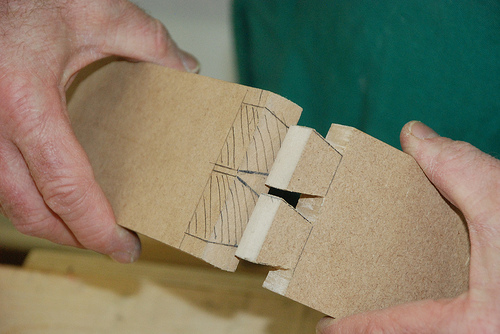Only those who risk going too far can possibly find out how far one can go. – T. S. Eliot
What does that mean?
I like this quote, as it says something perfectly logical, but which few people have actually considered. That something is the answer to the question, “How far can you go?”
To find the limits of your ability, one must go to the edge. But where is the edge, and how does one find it? The usual manner is to keep going bigger until you find the limit.
In short the way you find the edge is to keep going until you fail, at which point you have gone past your limit or ability, at least at this point in time, with your present level of skill.
Yet how many people will claim they can’t do something when it is merely outside their comfort zone, rather than truly being beyond how far they can go?
Why is testing yourself important?
You can figure out your limits by trying things, and seeing what you can and cannot do. By going too far, you know where the edge is, at least for the moment. Some practice, some coaching, a mentor or even a book, and it may well be time to test again, right?
If we look at it from the other direction, how will you know what your limits are if you never test yourself? Isn’t that the main reason for tests in school? It is the same at work and in professional societies. You learn something, and then take a test to see your new limits.
By testing ourselves, by pushing our limits and trying again, we get better. We find new things to try, new methods or tactics. If we keep it up, eventually we get better and better. And then the next time, we find that a different part of what we are doing is the weak part.
Again, from another viewpoint, how would you know what to work on improving if you never tested yourself to see where you were weak and where you were strong? And the only way to find where you are weak is to push until you fail, until your weakness is exposed. And that’s a good thing.
Where can I apply this in my life?
Everywhere, I believe, so long as a little caution is applied. If you successfully jumped off a chair and a counter, the next step to see how far you can jump down without injury isn’t the roof of a 5 story building, right? When there is a risk of injury, take smaller steps, and exercise more caution. It only makes sense.
But, to get back to the quote, if you are afraid of jumping down even one step on the stairs, you never will find out what your limit is. That said, unless you’re a pre-teen or teenage boy, you probably aren’t all that interested in how far you can “safely” jump down.
For the rest of us, we probably want to test other parts of our lives. How fast can we read and still retain information? That’s useful in school and any other learning situation. You rarely have the luxury of all the time you might want, so it is very helpful to know how fast you can go and still remember.
If it is a skill you are testing, perhaps woodworking, is your joinery the weak link? Perhaps your sanding is a bit rough? Do you do a good job when applying varnish, stain, or oils? How do you find out? You build something and take a careful look at it. Are the dovetails clean and tight? Is it smooth? Is the finish even and unblemished?
By trying and pushing the limits, you learn at what you excel, what your are good at, and where you need improvement. And if you never got to the sanding part because you couldn’t get the dovetails to fit, perhaps you need to go back over your joinery skills, right?
By risking failure, by trying and pushing beyond where you know you can easily go, you eventually find the edge of your abilities. By taking the chance at going too far, you can find out more. By going farther each time, until you actually go too far, you find your limit.
But once you know what the limit is, you can either accept it, or you can work on improving yourself. Which is the correct answer will depend on the value you place on the improvement compared to the cost of attaining that next level of accomplishment.
But it is only an option if you have tested yourself, and gone a little too far.
From: Twitter, @thequote
confirmed at : http://en.wikiquote.org/wiki/Challenge second entry
Photo by Jordanhill School D&T Dept
Related articles
- A Test of Who You Truly Are! (seanknows.wordpress.com)
- Balancing Act (loveawewonder.com)
- The Weakness of Giving Up… (makeadifferencemarketing.wordpress.com)
- {Monday Motivation} Test Your Limits (fitgirlhappygirl.com)
- Sharpening Table Frame (orchardlanefinefurniture.wordpress.com)

